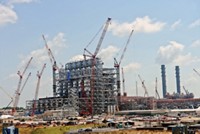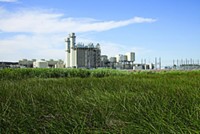Advertisement
Grab your lab coat. Let's get started
Welcome!
Welcome!
Create an account below to get 6 C&EN articles per month, receive newsletters and more - all free.
It seems this is your first time logging in online. Please enter the following information to continue.
As an ACS member you automatically get access to this site. All we need is few more details to create your reading experience.
Not you? Sign in with a different account.
Not you? Sign in with a different account.
ERROR 1
ERROR 1
ERROR 2
ERROR 2
ERROR 2
ERROR 2
ERROR 2
Password and Confirm password must match.
If you have an ACS member number, please enter it here so we can link this account to your membership. (optional)
ERROR 2
ACS values your privacy. By submitting your information, you are gaining access to C&EN and subscribing to our weekly newsletter. We use the information you provide to make your reading experience better, and we will never sell your data to third party members.
Environment
Controlling Mercury Emissions
May 19, 2008
| A version of this story appeared in
Volume 86, Issue 20
Technology to capture mercury from coal-fired power plants has grown more effective and less expensive in the past five years, experts said at a Senate hearing on May 13. Those controls, involving mainly the injection of activated carbon into flue gases, can curb mercury emissions by some 90% at many power plants, experts in air pollution controls told the Senate Environment & Public Works Committee. A facility's configuration and the type of coal it burns influence the controls' efficiency, the experts noted. Lisa P. Jackson, New Jersey commissioner of environmental protection, told the committee that activated carbon injection "has proven to be very low-cost" for coal-fired facilities, which must comply with a state regulation requiring them to cut mercury emissions by 90%. She added that the state also has an alternative standard of 3 mg of mercury per megawatt-hour for plants that already had lower emissions of the neurotoxic metal. The testimony came as part of a hearing on S. 2643, a bill that would require an EPA regulation to cut mercury emissions from power plants by 90% from their current level. Earlier this year, a federal court threw out EPA's cap-and-trade rule on mercury that would have cut mercury emissions from power plants by 69%.




Join the conversation
Contact the reporter
Submit a Letter to the Editor for publication
Engage with us on Twitter